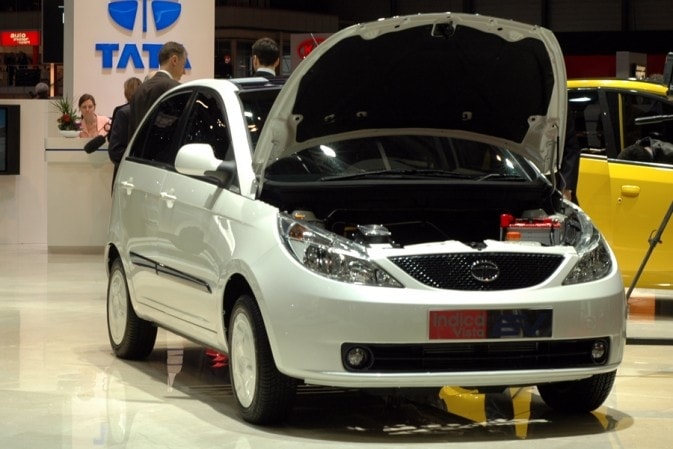The European version of the pocket sized Tata Nano, which was given the never-would-have-thought-of name Europa, will be coming to the Old Continent in 2011, according to the Financial Times.
The Nano Europa, meant to enter a more demanding market than the one in homeland India, will meet all safety and emission requirements in effect here, as its manufacturer claims.
In abstract terms, this means the Europa version will release 100g/km of CO2 into the atmosphere and average some 60 miles per gallon (4.7l/km). This from a three cylinder engine, controlled via a five speed automatic transmission.
The use of features we usually take for granted on our everyday vehicles, such as electric power steering, antilock brakes and even airbags are also stared (and this is no exaggeration) on the Nano Europa.
Not the same happens with its Indian brother, as the race for building the cheapest car on the local market has cut all that out. Not to mention it doesn't even have a passenger side mirror or a second windscreen wiper.
But, as we said, this is not the case with the European version. And surely, the price will not even come close to the one Indian consumers will have to pay for it starting April. A fact that reinforces the question: what does Tata hope to achieve in Europe?
Tata, as a car manufacturer, has no image on the European continent. It plans on tackling the European market with a vehicle praised for being the cheapest in the world (a fact that by itself has no appeal to the European consumer, even if you take into account the economic crisis), yet will probably sell it in the 4,000-6,000 euros range - an optimistic estimate.
To give you an idea, crisis inspired incentives have made new cars more accessible. Dacia Logan or Renault Clio can cost as low as 5,500 and 6,800 euros, respectively, thanks to governments' intervention and supplier initiatives.
Regardless of the philosophical debates regarding environmental issues or crowded streets, Europeans still like their cars to be big. Or at least medium-sized. So unless Tata is counting on a Trabbie-like enthusiasm, or a dictatorial regime to force the Nano on the Europeans, we really doubt this will be a blooming market for the tiny car.
The Nano Europa, meant to enter a more demanding market than the one in homeland India, will meet all safety and emission requirements in effect here, as its manufacturer claims.
In abstract terms, this means the Europa version will release 100g/km of CO2 into the atmosphere and average some 60 miles per gallon (4.7l/km). This from a three cylinder engine, controlled via a five speed automatic transmission.
The use of features we usually take for granted on our everyday vehicles, such as electric power steering, antilock brakes and even airbags are also stared (and this is no exaggeration) on the Nano Europa.
Not the same happens with its Indian brother, as the race for building the cheapest car on the local market has cut all that out. Not to mention it doesn't even have a passenger side mirror or a second windscreen wiper.
But, as we said, this is not the case with the European version. And surely, the price will not even come close to the one Indian consumers will have to pay for it starting April. A fact that reinforces the question: what does Tata hope to achieve in Europe?
Tata, as a car manufacturer, has no image on the European continent. It plans on tackling the European market with a vehicle praised for being the cheapest in the world (a fact that by itself has no appeal to the European consumer, even if you take into account the economic crisis), yet will probably sell it in the 4,000-6,000 euros range - an optimistic estimate.
To give you an idea, crisis inspired incentives have made new cars more accessible. Dacia Logan or Renault Clio can cost as low as 5,500 and 6,800 euros, respectively, thanks to governments' intervention and supplier initiatives.
Regardless of the philosophical debates regarding environmental issues or crowded streets, Europeans still like their cars to be big. Or at least medium-sized. So unless Tata is counting on a Trabbie-like enthusiasm, or a dictatorial regime to force the Nano on the Europeans, we really doubt this will be a blooming market for the tiny car.

